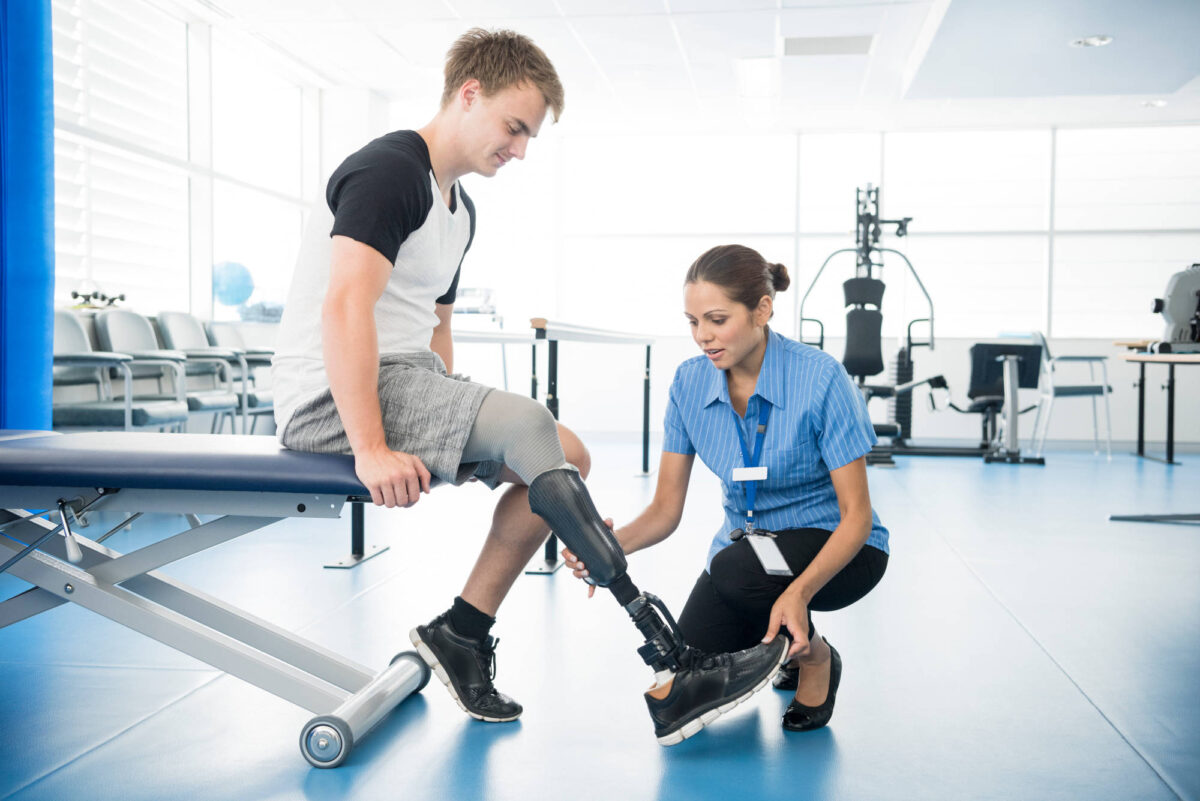Long-Term Physical Activity After Severe Injury

Sufferers of severe injury tend to exhibit high rates of inactivity and sedentary behaviors [1]. By not engaging in regular physical movement, they are at a higher risk of heart disease, various cancers, and type 2 diabetes, as well as all-cause mortality [1]. Furthermore, the inactivity associated with a severe injury can often lead to disability and decreased mobility, both of which create a self-reinforcing cycle in which injured people abstain from physical activity due to its difficulty, and physical activity becomes more difficult for them to participate in as a result [2]. With the number of global years spent living with disability increasing worldwide, the need for injured people to adopt active lifestyles is more pressing than ever [3].
Psychology accounts for a significant part of the reason why sufferers of severe injury find it difficult to maintain regular physical activity regimens over the long term. Even when physical injuries heal, trauma can continue to impact patients’ psychological states, to the extent that it may even stunt their ability to return to normal activities [2]. A survey of 2,955 traumatically injured people three to five years after the traumatic event found that mental health issues kept some of the respondents from being physically active [1]. Disorders such as depression, or symptoms such as persistent fatigue and general disinterest, that had developed since the injury discouraged the injured from exercising [1].
Related to the psychological reasons keeping the severely injured from being physically active is a perceived lack of support. Injury can take a drastic toll on one’s willingness and ability to be social, leading to pronounced isolation that could worsen psychological difficulties [2]. Additionally, serious injury can keep people from participating in physical activities that once served as social outlets for them, increasing their sense of loneliness [1].
To ameliorate this phenomenon, researchers have studied the effects of planned, systematic exercises on people with chronic moderate-to-severe brain injuries [4]. They found that group exercise environments, where participants were supported by staff members, fellow participants, and family, improved 80% of the subjects’ physical and mental states in just twelve weeks [4]. Another study found that, when severely injured people find role models who have lived with the same injury for a longer period, they are increasingly confident and thus more responsive to physical activity [5]. While injury may detach people from their social spheres, including the injured in a supportive social environment can reverse that trend and encourage them to be physically active.
Unfortunately, social support cannot entirely solve another difficulty that keeps injured people from exercising regularly: a lack of financial resources. One’s level of insurance coverage is a strong indicator of whether an injured person participates in regular physical activity, with Medicaid patients being 68% more likely than people with commercial insurance to receive care at a skilled nursing facility rather than a rehabilitation facility [6]. Because skilled nursing facilities tend to provide less intensive care than inpatient rehabilitation facilities, this contributes to Medicaid patients having longer recovery timelines and worse outcomes [6].
Reducing the negative impact of insurance disparities requires institutional change. Government-funded insurance programs need to offer better and more services so that patients can recover in environments that facilitate increased physical activity [6]. Of course, such a shift would take years if not decades to implement [6]. In the meantime, saving one’s money to facilitate the purchase of special equipment, such as wheelchairs, and coordinating with others to increase access to physical activity can have great benefits [5].
The road to physical activity following a severe injury can be a long one, but by developing strong social networks and finding resources wherever possible, injured people can make significant strides towards changing their lives for the better.
References
[1] C. L. Ekegren et al., “Adaptation, self-motivation and support services are key to physical activity participation three to five years after major trauma: a qualitative study,” Journal of Physiotherapy, vol. 66, no. 3, p. 188-195, July 2020. [Online]. Available: https://doi.org/10.1016/j.jphys.2020.06.008.
[2] C. L. Ekegren et al., “Physical Activity and Sedentary Behavior Subsequent to Serious Orthopedic Injury: A Systematic Review,” Archives of Physical Medicine and Rehabilitation, vol. 99, no. 1, p. 164-177, January 2018. [Online]. Available: https://doi.org/10.1016/j.apmr.2017.05.014.
[3] B. J. Gabbe et al., “RESTORE: Recovery after Serious Trauma—Outcomes, Resource use and patient Experiences study protocol,” Injury Prevention, vol. 21, no. 5, p. 348-354, August 2014. [Online]. Available: https://doi.org/10.1136/injuryprev-2014-041336.
[4] L. S. Lorenz et al., “Healthy body, healthy mind: A mixed methods study of outcomes, barriers and supports for exercise by people who have chronic moderate-to-severe acquired brain injury,” Disability and Health Journal, vol. 11, no. 1, p. 70-78, January 2018. [Online]. Available: https://doi.org/10.1016/j.dhjo.2017.08.005.
[5] W. Kerstin, B. Gabriele, and L. Richard, “What promotes physical activity after spinal cord injury? An interview study from a patient perspective,” Disability and Rehabilitation, vol. 28, no. 8, p. 481-488, April 2006. [Online]. Available: https://doi.org/10.1080/09638280500211932.
[6] E. Gardizi et al., “Comorbidity and Insurance as Predictors of Disability After Traumatic Brain Injury,” Archives of Physical Medicine and Rehabilitation, vol. 95, no. 12, p. 2396-2401, December 2014. [Online]. Available: https://doi.org/10.1016/j.apmr.2014.06.004.
